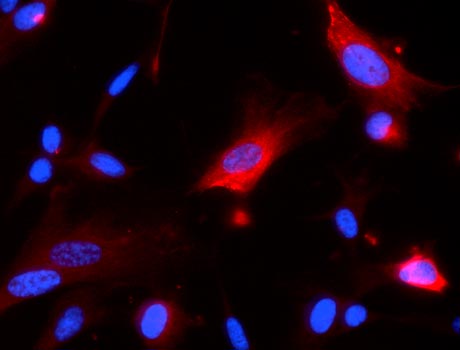Stem Cell - The little wonders

Stem cells are the basic cells which have the capacity to develop into almost all types of cells of the body. If given correct environment and necessary stimulus, each stem cell can develop into a specialized tissue/organ. Such is the power of these tiny living cells. These cells are abundantly present in umbilical cord blood, cord tissue, placenta, dental pulp, bone marrow, body fat, menstrual blood and urine. Researchers have confirmed the presence of these cells in urine, milk teeth and menstrual blood. However, stem cells derived from these sources are different from each other in the sense that they grow into different type of tissue or cells. For example, stem cells from bone marrow hematopoietic stem cells gives rise to red blood cells, platelets, and white blood cells. Dental stem cells differentiate to form cartilage producing cells and nerve cells, stem cells derived from menstrual blood give rise to cardiac cells, endothelial cells and so on.
Thus stem cells have opened a new avenue for therapeutics, which will give a total regenerative cure unlike preventive or curative treatment. Untreatable diseases with no known treatment modality available for muscular dystrophies, diabetes mellitus, stroke, autism have shown promising results after transplantation of stem cells. In the early 1900s, European researchers realized that the various types of blood cells eg. white blood cells, red blood cells and platelets all come from a particular 'stem cell'. However, it was not until 1963 that the first quantitative descriptions of the self-renewing activities of transplanted mouse bone marrow cells were documented by Canadian researchers Ernest A McCulloch and James E Till. Research into adult stem cells in humans has been ongoing since this time, and bone marrow transplants - actually a transplant of adult stem cells - have in fact been used in patients receiving radiation and chemotherapy since the 1950s.The range of diseases which have been cured include Alzheimer's, ALS, Autism, Brain Damage, Cerebral Palsy, Cosmetic & Anti Ageing applications, Crohn's Disease, Corneal Repair, Diabetes, Eye Diseases, Hair regeneration, Kidney Diseases, Liver Diseases, Macular Degeneration, Multiple Sclerosis, Parkinson's Disease, Myocardial Infarction, Muscular Dystrophy, Rheumatoid Arthritis, Scleroderma, Spinal Cord Injuries, Stroke, Skin Repair, Sports Injuries and Wound Healing.
Stem cells can be stored or cryopreserved for years using cryopreservation methods.
Liquid nitrogen is used to preserve stem cells, the temperature being as low as -196°C, much below the freezing point of water. However, it is known that inspite of such low temperatures; the cell structure is well preserved for an infinite period of time and can be activated when required. The first cord blood bank started in year 1992 and since then many private cord blood banks are offering banking of cord blood. Basically there are two types of cord blood banks-private and public blood banks. In private blood banks, cord blood is preserved for that the use of that particular person or members of his family where as in public cord blood is cryopreserved for research and therapy purpose. When the stem cells from umbilical cord blood are isolated and cryopreserved, the age of the cells is very young. Thus when the need arises in future, they will of younger age then the age of the person and hence will be more potent. Besides, one's own stem cells will always be acceptable by the body and hence no chances of rejection.
